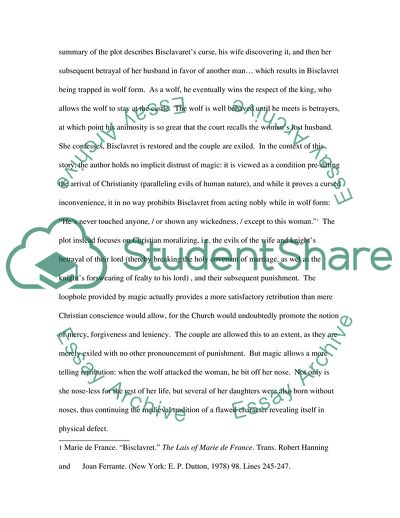An Analysis of Fairies as a Literary Device in Medieval Folklore Essay Example | Topics and Well Written Essays - 2000 words. https://studentshare.org/literature/1703885-medieval-folklore
An Analysis of Fairies As a Literary Device in Medieval Folklore Essay Example | Topics and Well Written Essays - 2000 Words. https://studentshare.org/literature/1703885-medieval-folklore.


